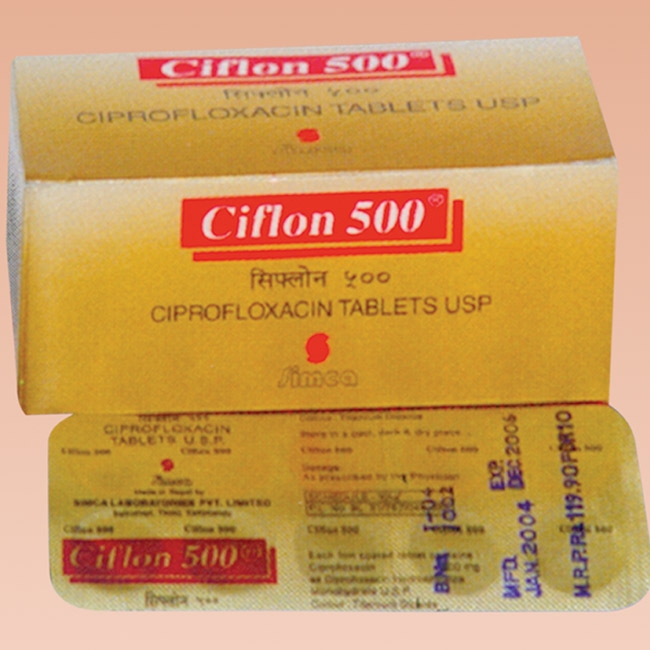Ciflon
Generic composition: Ciprofloxacin HCl
General Introduction
Ciflon contains the active ingredient, Ciprofloxacin HCL Monohydrate, the most potent first generation fluoroquinolones against a broad range of bacteria.
Therapeutic category
- Anti-bacterial
Dosage forms available
- CIFLON 500mg Tablets
Mechanism of Action
Ciprofloxacin is a broad-spectrum antibiotic active against both Gram-positive and Gram-negative bacteria. It functions by inhibiting DNA gyrase, enzymes necessary to separate bacterial DNA, thereby inhibiting cell division.
Pharmacokinetics
Ciprofloxacin given as an oral tablet is rapidly and well absorbed from the gastrointestinal tract after oral administration. The absolute bioavailability is approximately 70%, plasma protein binding is 20-40%. After oral administration, ciprofloxacin is widely distributed throughout the body. Ciprofloxacin has also been detected in lung, skin, fat, muscle, cartilage, CSF and bone. Approximately 40 to 50% of an orally administered dose is excreted in the urine as unchanged drug.
Uses
- Urinary tract infections
- Gonorrhea
- Bacterial gastroenterititis
- Typhoid
- Bone,softtissue,gynaecological and wound infections
- Respiratory infections
- Tuberculosis
- Gram negative septicaemias
- Meningitis and Conjunctivitis
Dose
- 500mg q12h for upto 7 to 14 days
Contraindications
- Ciprofloxacin tablets are contraindicated in persons with a history of hypersensitivity to ciprofloxacin, any member of the quinolone class of antimicrobial agents, or any of the product components.
- Concomitant administration with tizanidine is contraindicated.
Adverse Reactions
- Gastrointestinal: nausea, vomiting, bad taste and anorexia
- CNS: dizziness, headache, restlessness, anxiety, insomnia, confusion and tremor.
- Skin/hypersensitivity: rash, photosensitivity, urticaria and swelling of lips.
- Tendonitis and tendon rupture: few cases reported.
Drug Interactions
- Plasma concentration of theophylline,caffeine and warfarin are increased by ciprofloxacin due to inhibition of metabolism.
- NSAIDs may enhance the CNS toxicity of ciprofloxacin.
- Antacids, sucralfate and iron salts concurrently reduce absorption of Ciprofloxacin.
Precautions
- Alteration of the dosage regimen is necessary for patients with impairment of renal function.
- Moderate to severe photosensitivity/phototoxicity reactions. Discontinue if phototoxicity occurs
- Convulsions, increased intracranial pressure, and toxic psychosis have been reported in patients receiving quinolones, including ciprofloxacin. Ciprofloxacin may also cause central nervous system (CNS) events including: dizziness, confusion, tremors, hallucinations, depression, and, rarely, suicidal thoughts or acts. These reactions may occur following the first dose. If these reactions occur in patients receiving ciprofloxacin, the drug should be discontinued and appropriate measures instituted.


